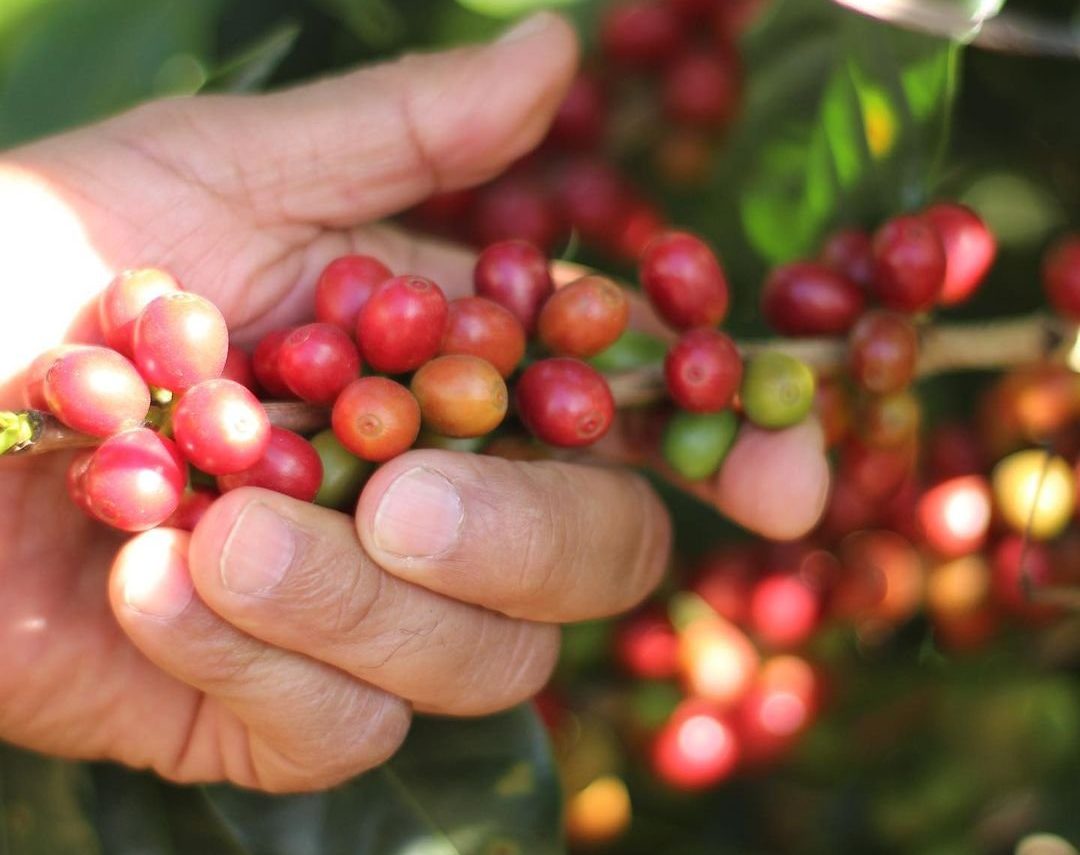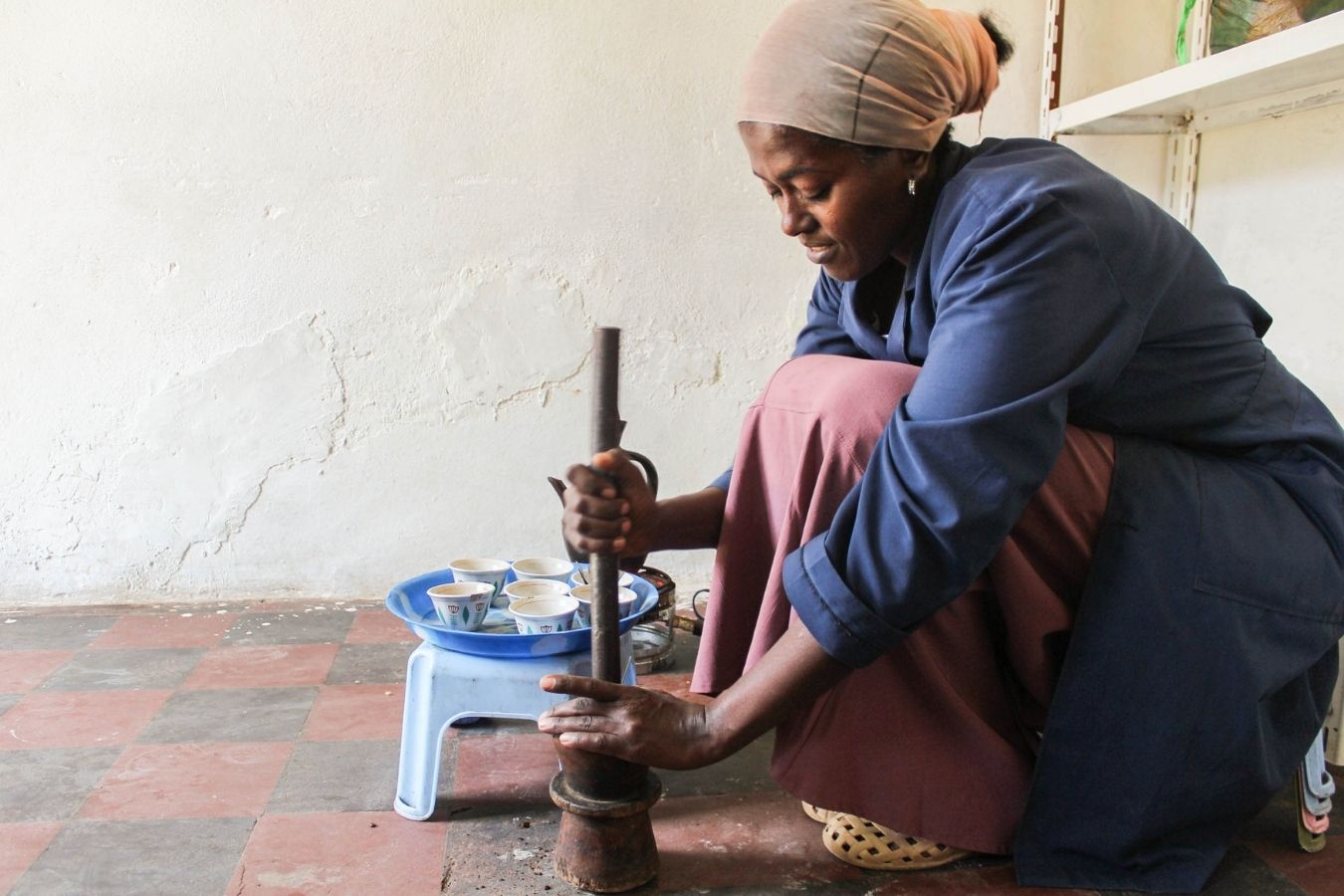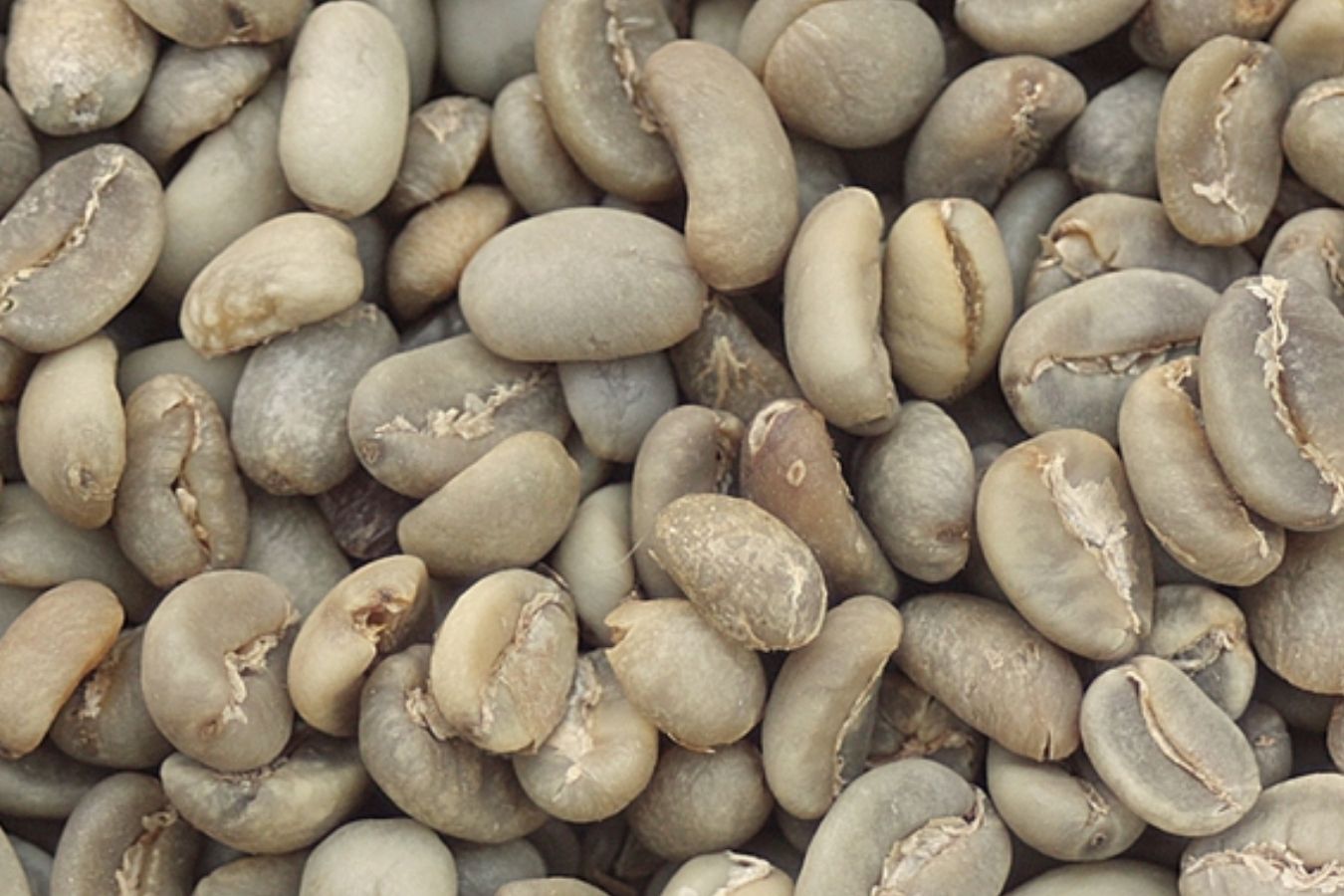
Top 15 types of the best coffee and most popular
1. Civet Coffee – The best coffee beans
It is the name of a unique coffee, classified as the most luxurious and rare worldwide. This type of coffee is almost exclusively found in Indonesia, on Sumatra, Java, and Sulawesi islands.
It was derived from the Indonesian word kopi, which means coffee. Luwak is the name of an area on Java’s island and the civet that inhabits it. The spotted civet (Paradoxurus hermaphrodites) belongs to the civet family (Viverridae).

This species is scattered in Southeast Asian countries such as Indonesia, the Philippines, Vietnam, and southern China. Their favorite drinks are fruit and coffee berries. However, only the coffee meat is digested when entering the stomach, and the coffee beans are excreted through the digestive tract. This process forms the primary basis for the legendary coffee today.
2. Blue Mountain Bean Coffee
The best coffee beans – Blue Mountain coffee is one of the most expensive and popular Arabica beans globally. It is native to the east of the Blue Mountains in Jamaica. People call this coffee bean Jamaican Blue Mountain to distinguish it from other coffee beans.
With an altitude of 2000m – 5000m, the Blue Mountains is one of the highest coffee-growing regions in the world. The climate here is pleasant, and the rainfall is heavy. The soil is rich in nutrients and well permeable. The combination of soil and temperature creates ideal conditions for coffee plants.
However, this type of coffee is not suitable for other climatic conditions. Climate change will lead to a difference in the taste of coffee. That is why it is currently only grown in Jamaica and Hawaii.

According to coffee connoisseurs, this type of coffee is famous for its light, aromatic, less acidic taste, with a hint of sweetness and richness. A kilogram of this type of coffee is currently about 100 USD. Japan is the largest importer of Blue Mountain coffee (90% of total production). These beans are also the basis for Tia Maria flavored coffees.
3. Bourbon Coffee Bean
Café Bourbon is typically produced at altitudes between 1,000 and 2,000 meters and yields 20-30% more than Typica but can produce comparable coffee quality.

4. Ethiopia Coffee
Coffee still grows naturally in the mountains of Ethiopia. Ethiopian coffee farmers grow in four different systems: forest coffee, semi-forest coffee, coffee garden, and coffee plantation. Smallholder farmers produce about 98% of coffee in Ethiopia, which is the country’s most important export.
Ethiopia is Africa’s third-largest coffee producer. There are about 700,000 smallholder coffee producers in Ethiopia, of which 54 percent are in semi-forests. Coffee has been part of their indigenous cultural traditions for over ten generations.

Ethiopian coffee is one of the most popular coffee origins in the world. However, Ethiopia has to compete and cooperate with coffee companies, which often have more market power and higher profits. The average Ethiopian coffee grower earns around $900 per year every year.
The certification of Ethiopian coffee began after establishing the Coffee Council of Ethiopia (NCBE) in 1957. The objective of the NCBE is to control and coordinate the production, sales, exportation, and improvement of coffee quality. Ethiopia.
5. Villasarchi Coffee
Villasarchi is a hybrid of Bourbon coffee. Villasarchi grew up in the Sarchi Valley, west of Costa Rica. The branches of this coffee tree grow obliquely from the trunk at a 45-degree angle, scattering a well-balanced area of leaves around the tree.
6. Typica Coffee
Arabica Typica is the oldest coffee variety. It is the first coffee variety discovered by humans in the Kaffa region of Ethiopia in the last century that people often tell as the story of a goat herder. The seeds of Typica coffee were brought to America by a French naval officer in the 1700s.
Typica has a meager yield, small size, and oval shape. However, the quality of Typica is excellent, exhibiting excellent taste, bittersweet with a slight sourness, and well-balanced and robust physique.
7. Geisha Coffee
Geisha is a scarce coffee variety that has conquered the world’s best-informed coffee connoisseurs. Its flavor is indescribably complex. Some people say it is very complicated and intense! This coffee variety was discovered in the small town of Gesha in southwestern Ethiopia and brought to grow in Costa Rica.

These Geisha coffee trees grow tall, with beautiful canopies, and elongated leaves. The berries and beans of this Geisha are also longer than other coffee varieties. The top quality of this coffee variety is born from the plantations in the highlands and is acclaimed worldwide.
8. Colombia Coffee
The Colombian coffee variety is the hybrid child of two parents Robusta and Arabica. This coffee variety was bred and developed in Colombia to resist disease while increasing yield. For decades Colombia tried to produce dozens of versions known as the F10-F1. F10, also known as the Castillo.
And finally, the culmination is the official Colombian breed, which proudly bears the name of a country. This is the most popular cultivar in Colombia. However, Colombia has a robust and wonderful aroma, very high acidity, viewed with a bitter aftertaste, almost no sweet aftertaste, and intense physicality, used in premium coffee brands.
Colombian coffee is a blend of coffee beans from many different regions to maintain high quality. As well as Kona and Jamaican Blue Mountain, Colombian beans are exclusively derived from Arabica coffee, which has a smoother, less acidic flavor profile than Robusta beans.
9. Toraja Coffee Beans
Toraja Coffee from Sulawesi (Celebes) is a multi-dimensional coffee grown in the southeastern highlands and distinguished by its expansive flavor with full-bodied richness.
Characteristics Of Sulawesi Toraja Coffee
A good Toraja is well-balanced with undertones of ripe fruit and dark chocolate. Toraja coffee tends to have a relatively low-toned yet vibrant acidity, though usually slightly more acidic and with less body than Sumatran coffees and more earthy than Java Arabica.

Like Sumatran coffees, the cup profile of Toraja has been called deep and brooding, with muted fruit notes, rustic sweetness, and often a pungent spicy quality. A Dark Roast is recommended.
Sulawesi Toraja Coffee Growing Regions
Sulawesi Toraja coffee is grown at relatively high altitudes on the Sulawesi island, formerly called Celebes (the Dutch colonial name), located in the middle of Indonesia’s Malay archipelago. For this reason, Toraja coffee is also known as Celebes. Kalos is a coffee-growing area in the country’s southeastern highlands.
10. Arabica Cau Dat coffee – The best coffee from Vietnam
The land of Cau Dat – Da Lat, where the altitude is 1,500m, is naturally favored to grow rare Arabica coffee varieties. Currently, on the coffee market, there are two main types of coffee, Arabica and Robusta; Arabica is more appreciated because it has a delicious taste.
Arabica was brought to Vietnam by the French in the 30s of the last century. Lam Dong province with localities such as Di Linh, Bao Loc, Don Duong, the suburbs of Da Lat, especially Cau Dat area, is considered the Arabica coffee paradise of Vietnam with the “golden index”, high 1,500 m, cool temperate climate all year round, the maximum temperature of the year does not exceed 330C, the minimum temperature is 50C. This is the highest quality Arabica coffee production area in the country. The higher the terrain, the colder the climate, and the more excellent quality Arabica coffee beans are produced.
Arabica’s best coffee bean lines include Bourbon, Typica, Mocha (Moka), and Catimor. In which, three lines Bourbon, Typica, Mocha are the oldest coffee varieties in the world, but these three types of coffee are challenging to grow and susceptible to pests and diseases. In contrast, the Catimor coffee variety, developed in Portugal in 1959, is a hybrid of two varieties Caturra and Timor (Timor is a cross between the robusta Coffea canephora and arabica). This variety is easier to grow, has a high yield, and is resistant to pests and diseases.
Cau Dat Arabica has a mild sour taste mixed with mild bitterness, light brown watercolor, and clear amber. The scent of Arabica is very elegant and noble, Arabica has the smell of syrup, the scent of fruit, mixed with the smell of honey, the smell of toasted bread, and the smell of the straw field at noon in the summer… Serving the most discerning people in the world. Arabica coffee is the main raw material of coffee companies, the most famous coffee brand in the world.
11. Hawaiian Kona Coffee Bean (Koa Coffee)
Kona is Hawaii’s most oversized island and an excellent place to grow high-quality coffee. According to Forbes, this is the greatest coffee in America. With an exceptional microclimate, the optimal balance of rain and heat, and rich volcanic ground, the slopes of the largest island are excellent for producing coffee.
A high-quality Kona coffee is worth the price if you get the real deal. By eliminating Kona mixes, just 10% of the combination might be real Kona. Always purchase Extra Fancy since it is of the most excellent quality (the grade). With a medium body, moderate acidity, and a rich, smooth taste, this coffee would be a great addition to your auto-drip or pour-over routine.
Samuel Reverend Ruggles introduced the coffee plant to the Kona area from Brazilian cuttings in 1828. Later in the nineteenth century, English businessman Henry Nicholas Greenwell went to the region and developed Kona coffee as a well-known brand. Greenwell Store and Kona Coffee Living History Farm have become museums.

It was farmed on big estates in other areas of the Hawaiian islands, but the 1899 international coffee market crisis forced plantation owners to lease property to their employees. 70 of them were imported to work on sugarcane farms from Japan. They farmed as a family on their leased pieces of 5 to 12 acres (49,000 m2), producing enormous, high-quality harvests.
Throughout Kona, the custom of family farming persisted. Filipinos, mainland Americans, and Europeans have joined the Japanese-origin households. There are around 800 Kona coffee plantations, each of which is smaller than 5 acres in size (20,000 m2). The overall Kona coffee area (9 km2) was 2,290 acres in 1997, with slightly over two million pounds of green coffee output.
The Kona Coffee Belt is a designated “terroir” between 500 and 3200 feet above sea level on Hualalai Mountain and Mauna Loa. It begins on Palani Road, with Makalei being the most northern segment, and continues via Koloko, Hawaii Route 180, also known as North Kona Road or Kona Heritage Corridor, Holualoa, and Kainaliu, before merging with Hawaii Route 11 at Kainaliu and extending into Kealakekua and Honaunau.
Average rainfall (60+ inches per year), slightly acidic, well-drained volcanic soil, mild temperature swings from day to night (85 degrees day, 60 degrees night average), sunny mornings and cloudy afternoons, flowering in the dry season, fruiting in the wet season, and wind-protected western slopes are all characteristics of the region.
12. Helena Coffee Vietnam’s Organic Light Roast Coffee and Dark Roast Coffee
This kind of coffee bean is not only delicious, but it is also beneficial to one’s health. The company’s vision is to offer growers, consumers, and the environment healthy, organic coffee. It also has a terrific flavor.
They offer a variety of coffees, but you should start with this medium organic roast. It has many certification claims and tastes well in various brews.
13. Robusta Coffee From Daklak, Vietnam
Robusta specialty coffee is not only available in Buon Ma Thuot – Dak Lak. But to enjoy a cup of coffee with the right taste with the best quality, there is no comparison in this highland land. That is why the pure specialty coffee here always occupies a special place in the hearts of those who love coffee. Just enjoying it once is enough to fascinate people with the intense, rich flavor with a faint aroma of the mountains and forests of the Central Highlands.
Coming to Buon Ma Thuot, it is impossible not to buy a bag of Robusta specialty coffee as a gift for relatives and friends. This seems to have become a habit and custom for tourists who have the opportunity to visit the land known as the country’s coffee capital.
Robusta coffee in Vietnam is known as “Voi coffee”, which is the main type of coffee that accounts for 90% of the coffee growing area in our country. Especially with suitable climate and soil, the Central Highlands region produces the highest annual Robusta production in the country, bringing export value to the world market.
Robusta coffee trees have the form of a mature tree height of up to 10m. This type of coffee prefers to live in hot and humid tropical soils with lots of sunlight, suitable for growing below 1000m in places with average temperatures.
The caffeine content in Robusta coffee beans is relatively high, in the 2-4% range, with a slightly bitter and intense taste. However, this flavor is quite suitable for Vietnamese people, so it is not surprising that it is so popular.
14. Coffee from Volcanica AA Coffee Beans from Kenya
The fact that farmers reward superior coffee is probably one of the biggest factors in the quality of Kenyan coffee. The government holds an auction for all of Kenya’s coffee. High-quality coffee is sold at a higher price, allowing growers to expand their operations.
‘AA’ is the largest bean, followed by ‘AB’. The larger the better in Kenya. Always keep an eye out for the letters ‘AA.’ These coffees have sweet fruit aromas, a winey acidity, and a syrupy texture. Because of the processing, these coffees are among the cleanest-tasting in the world. This meticulously prepared East African coffee is famous for its rich body, pleasant, vibrant acidity, fragrant aroma, and winy aftertaste with overtones of berries and citrus.
Kenyan coffee is commonly described as having an almost sweet taste accompanied by wine-like or fruity overtones. They are well-known worldwide and sought after for their bold, intense, full-bodied flavors accompanied by overtones of berries, citrus fruits, and mild floral fragrances. This has led to Kenya AA coffee being described as sweet with bright acidity. It is proven that coffees made with Kenyan AA coffee beans contain little-to-no bitter flavors.
15. Tanzanian Peaberry Beans
A peaberry coffee bean is a single, spherical coffee bean found within a coffee cherry. A typical coffee cherry holds two beans, each having a flat side. The peaberry is the only fruit in the cherry and is colored distinctively.
Because of their round form and the fact that they are denser than other coffee beans, they roast more evenly. Peaberry bean coffee beans account for around 5% of all the finest coffee beans in a particular harvest. Hand sorting is necessary to get a large number of peaberry beans and to identify them from their half-bean counterparts. Prices rise as a result of the additional labor.
Tanzania Peaberry bean coffee is a rare African coffee varietal grown in the Mbeya Region of Southwestern Tanzania. These wonderfully smooth and full-bodied Tanzania Peaberry coffee beans are lightly roasted, fairly rich in flavour and characterized by notes of lemon, peach and black tea. The distinct aromatics, defining fruity flavour, medium acidity and clean, lively finish of this Tanzanian coffee are all perfectly paired without being overpowering.

The Mbeya region produces the most significant amount of Tanzanian Peaberry best coffee in Tanzania. Only 10% of the world’s coffee develops a peaberry characteristic – easily recognized by the smaller and rounder bean size.
This specific type of arabica coffee is not native to Tanzania and was brought to the country by missionaries in the late 19th century. Production of Tanzanian Peaberry coffee beans is often split between smallholder home processors, smallholder processors at central pulpers and estate-grown coffees.
Things to consider while choosing good coffee beans for you
Before you choose your coffee beans, there are a few factors to consider that might affect your coffee’s flavor.
- Roast Profile
The kind of roasting procedure your coffee has will typically decide the best brewing technique.
To promote caramelization, espresso roast coffee is subjected to roaster development. If you use an espresso machine to make your coffee, this is the coffee for you.
Filter-roasted coffee, on the other hand, receives less development to preserve the coffee’s bright acidity. If you use an immersion brewer or a pour-over to make your coffee, filter-roasted coffee is ideal for you.
So, if you consistently use a specific brewing technique, this may assist you in picking your beans – all you have to do now is decide which best matches your taste.
- Single Origin vs. Blend
Whether you like your coffee black or with milk, choosing a blend or single-origin coffee should be based on your preferences. If you prefer your coffee with milk, this mix is for you. If you like black coffee, go for the single-origin kind.
- Freshness
Remember that coffee is a fruit, and although the beans and ground coffee you prepare for them have a shelf life, it isn’t indefinite.
Even if you make your coffee in the greatest spot, leaving it out for too long will lose its flavour!
So, for the finest flavour, utilize your coffee beans within 1-2 weeks after the roast date.